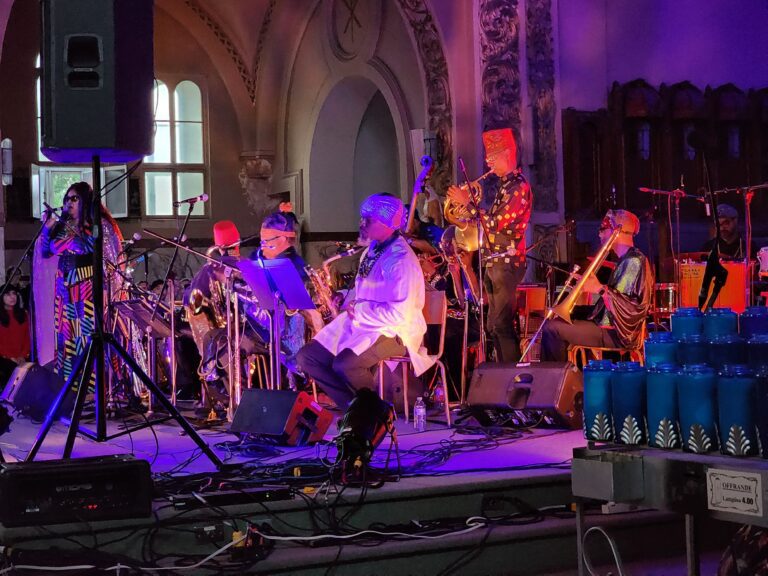Against all historical odds, the myth of Sun Ra (1914-1993) is one of the most enduring in the history of jazz, a myth that was once again observed this Sunday at Église Saint-Denis. Temporarily converted to Afrofuturism, the Christian temple was packed to capacity with trippers of all ages, who had come to commune with the spirits of the cosmos and the planet Saturn, the symbolic birthplace of the famous musician whose pseudonym the orchestra still bears, 70 years after its foundation.
Born Herman Poole Blount, nicknamed Sonny Blount in his early days as a sideman and arranger, this iconoclastic pianist was a conscientious objector during the Second World War. For this, he was imprisoned and deemed schizophrenic by prison doctors. Released into the wild in 1942, the creature did as it pleased.
Alabama-born Herman “Sonny” Blount began his career in the 30s on the blues and jazz circuit. Settling in Chicago in the 40s, he worked as an arranger for Fletcher Henderson and as a sideman for tenorman Coleman Hawkins. His big band was founded in 1953, and renamed the Sun Ra Arkestra in 1955. Sun Ra’s pseudonym was inspired by ancient Egypt, whose sun god was named Ra. Think of it!
From then on, the musician’s discourse was a series of intergalactic parables. It’s hard to say whether this rhetoric was the result of a real schizophrenia permeated by a fantasy rhetoric now associated with Afrofuturism, or whether it was a conscious way of escaping the reality that Herman Blount had to face in spite of everything – racism, difficult artistic conditions, economic precariousness, rejection by his peers, etc. Having interviewed him myself, I can testify that the enigma remains.
Considered very strange in the golden age of modern jazz (bebop and hardbop), at best a curiosity if not a freak show, Sun Ra included atonal sequences in his orchestrations long before Ornette Coleman named the approach free jazz and Miles Davis called Ornette downright stupid.
At the end of the ’60s, the Arkestra moved to Philadelphia, its instrumentalists all living in the same house, in the manner of the hippie communes of the time.
Over the decades, the Sun Ra Arkestra performed all over the world, including several concerts in Quebec City, Montreal and Victoriaville in the 70s, 80s and 90s…. After Sun Ra’s death in 1993, artistic direction was taken over by John Gilmore until his death in 1995. Then alto saxophonist Marshall Allen became the Arkestra’s grand helmsman, a force of nature now aged 99! Understandably, the soon-to-be centenarian hasn’t been on stage (or very rarely) for some time now! While Marshall Allen is still officially in charge of the Sun Ra Arkestra, Knoel Scott (alto and baritone saxes, percussion, break dancing) is its on-stage leader, and singer Tara Middleton is its priestess.
On Sunday evening, some fifteen instrumentalists made up the Sun Ra Arkestra, most of them elderly, but still animated by the solar and saturnian flames of their late leader. In front of us, a century of jazz unfolded with a certain grace and, at times, delicious imprecision: blues, swing, bebop, hardbop, soul, gospel, Brazilian jazz, but also free-jazz and other experimental approaches.
In fact, the Sun Ra myth has never deflated, and the balloon is still flying over our heads in 2023. Today, the Arkestra’s free passages are integrated and understood by a large proportion of music lovers, well beyond the circles of improvised music. As has been the case since the 60s, young people were strongly represented at this multi-generational happening, as PAN M 360 likes them, courtesy of Suoni Per il Popolo.
There’s something to be said for coolness and classicism.
